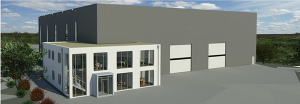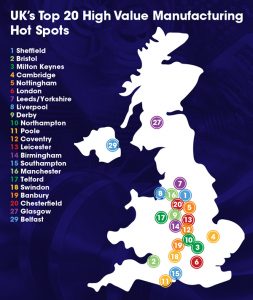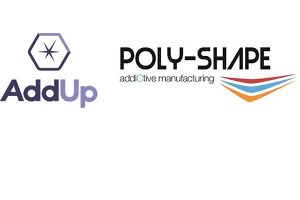Pressen HAAS GmbH and PTF Maschinenhandelsgesellschaft mbH have constructed a new modern office and warehouse centre in Straßberg/Winterlingen. The recent growth of the two companies, which specialise in used machines for metal forming and sheet metal working, should continue and is supported by the new 2,500 sq m facility.

“In addition to trade in second-hand machines, it is above all the services that make the difference,” says Mario Kosjerina, one of three managing directors. “A large number of our customers are not satisfied with the mere delivery of machines. Modifications, overhauls, commissioning and training for local staff are essential service components. We are well aware that in addition to investing in buildings, an expansion also involves more staffing requirements. Therefore, we are of course looking for service personnel at
our new location.”
Since 2006, when Kosjerina took over press specialist Werner Haas, a lot has happened in the industry. Thomas Geisel, managing director on the board since 2011, adds: “The internet has changed the trade significantly in recent years. Offers have become more transparent, making comparability much easier for the customer. In order to stand out from the competition, the services for selling a used machine are therefore becoming increasingly important.”
Holger Keinath, who is primarily responsible for the concerns of PTF, adds: “By expanding our business activities with the takeover of PTF in 2012, we have moved from pure trading in metal-forming presses to a partner in the metalworking industry. There is nothing that we cannot obtain if we do not have the right machine in stock.”
For the future, both companies plan to expand their activities and enter new markets, focusing on emerging regions such as Vietnam, North Africa and Mexico, although the EU and Asian markets continue to be important. The export share of the two companies is over 50%.
For further information
www.pressen-haas.de www.ptf-maschinen.de























